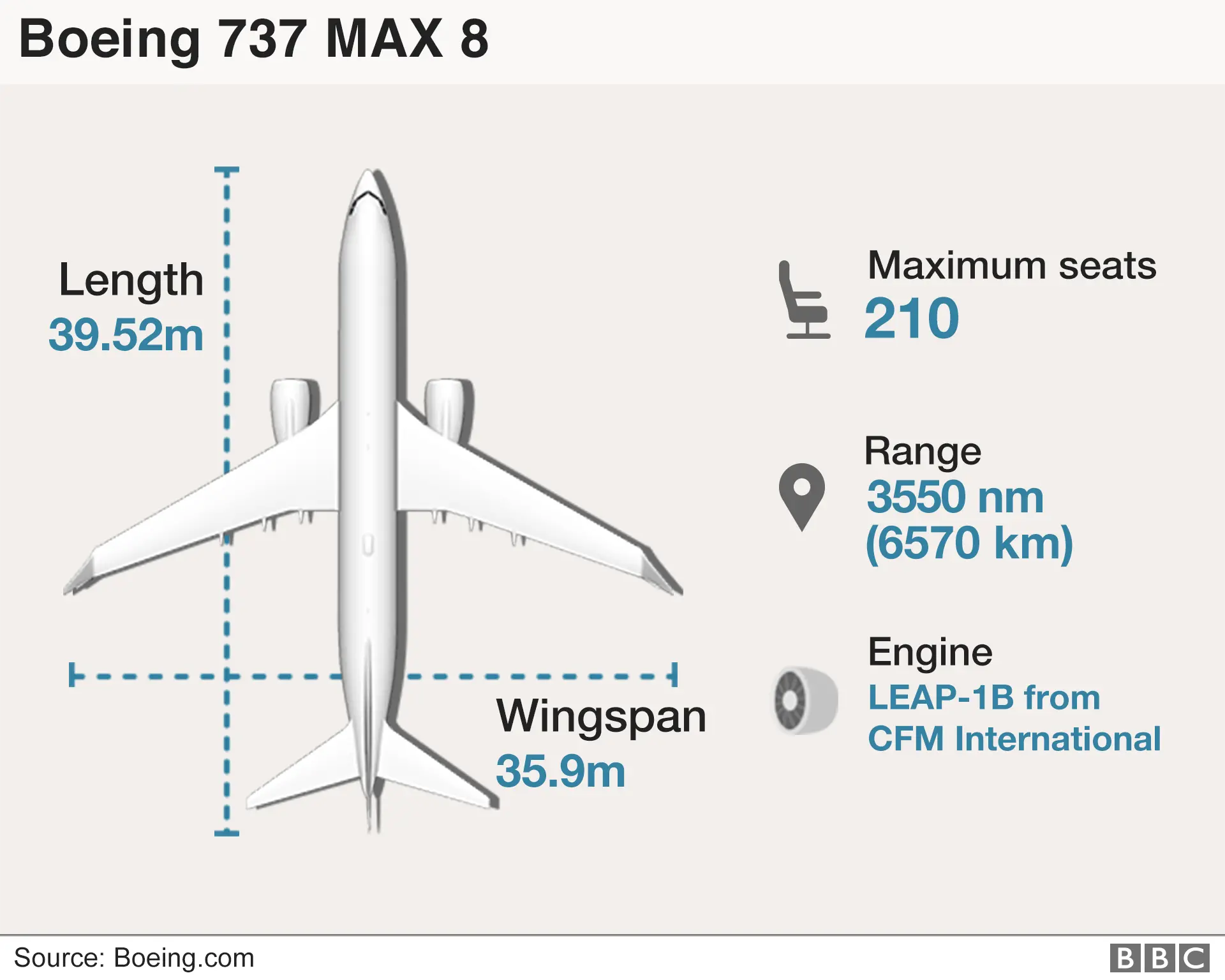Ethiopian Airlines: What do we know about Boeing 737 Max 8?
 Jonathan Druion
Jonathan DruionThe Ethiopian Airlines tragedy marks the second fatal crash within five months involving a new type of Boeing aircraft.
The Boeing 737 Max 8 has only been in commercial use since 2017.
In October last year a Lion Air Boeing 737 Max went down shortly after take-off from Jakarta, Indonesia, killing all 189 people on board.
That aircraft was less than three months old.
Ethiopian Airlines flight ET302 also went down just minutes after take-off. The aircraft - registration ET-AVJ - first flew in October 2018, according to flight tracking websites.
How the plane differed from previous model
Jakarta-based aviation analyst Gerry Soejatman told the BBC the 737 Max's "engine is a bit further forward and a bit higher in relation to the wing, compared to the previous version of the plane. That affects the balance of the plane".
The Indonesian National Transportation Safety Committee indicated that Lion Air flight 610 experienced "erroneous input" from one of its sensors designed to alert pilots if the aeroplane is at risk of stalling.
The inquiry has not yet reached any final conclusions about the cause of the disaster.

The sensor and connected software work in a different way to previous models of the 737, but pilots had not been told that.
Within days of the Lion Air crash, the aircraft maker Boeing issued an operations bulletin to airlines.
The US aviation regulator then issued an "emergency" airworthiness directive to US carriers about this sensor - a so-called Angle of Attack (AOA) sensor.
The Federal Aviation Administration said the sensor "condition, if not addressed, could cause the flight crew to have difficulty controlling the airplane, and lead to excessive nose-down attitude, significant altitude loss, and possible impact with terrain".
Who was sent the emergency alert?
US airlines were told to update information flight manuals for air crew.
At the time the FAA said the information was passed on to other national aviation regulators.
The expectation was that regulators would inform airlines and they in turn would update pilots.
Aviation sources say it almost certain that Ethiopian Airlines pilots would have been updated on the sensor issue.
There is no immediate evidence to suggest the Ethiopia Airlines jet has encountered the same difficulties as the Lion Air flight.
Aviation analyst John Strickland of JLS Consulting told the BBC: "There will be attention to the fact that this was a very new aircraft, the same type as that involved in the recent Lion Air accident and in a similar phase of flight - but detailed work taking time will be required to establish the cause."
What's Boeing's response?
In a statement on Sunday, Boeing said a "technical team is prepared to provide technical assistance at the request and under the direction of the US National Transportation Safety Board".
It has also said it extended its "heartfelt sympathies to the families and loved ones of the passengers and crew on board and stand ready to support the Ethiopian Airlines team".
The Boeing 737 Max has been the fastest-selling aircraft in Boeing's history, with more than 4,500 ordered by 100 different operators globally.
The initial findings of the investigation in Ethiopia will determine what action regulators and airlines take.
Ethiopian Airlines is regarded as Africa's leading airline.
Analyst John Strickland said it is "also recognised globally as a high-quality professionally-run company".
